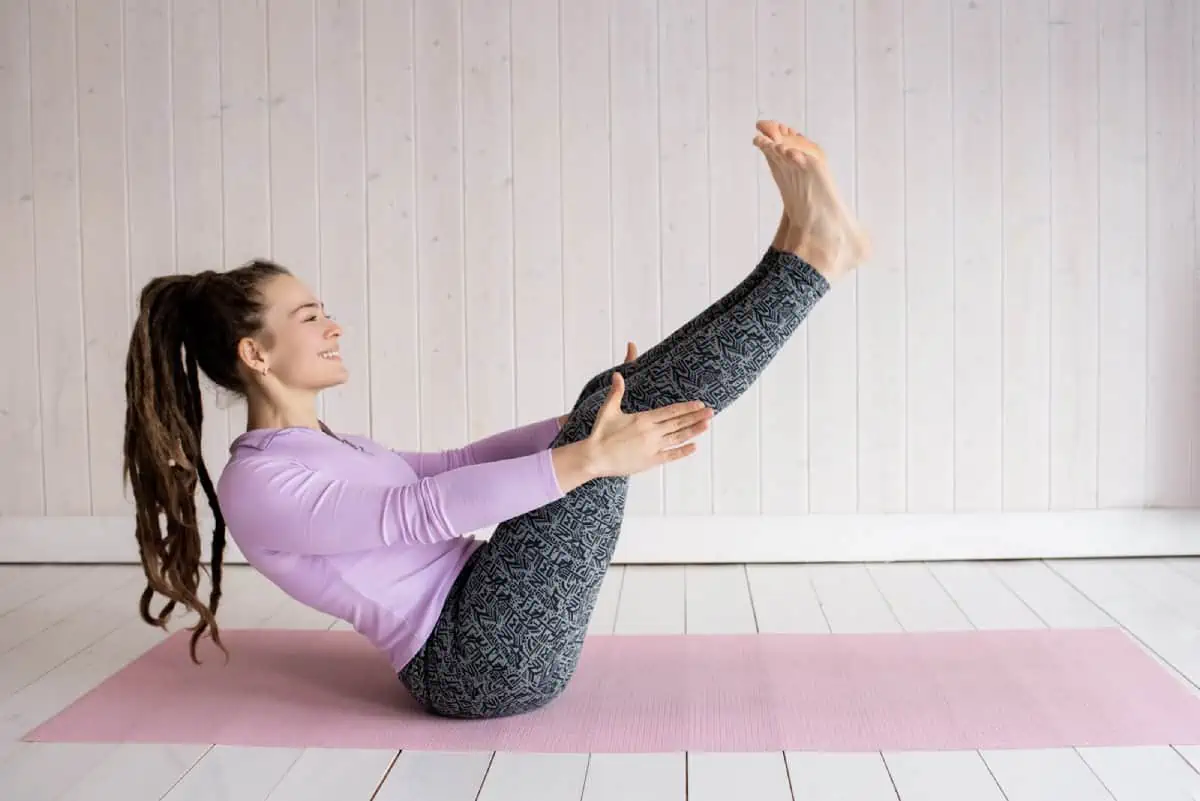Key Takeaway
Boat Pose (Paripurna Navasana) is a full-body workout that strengthens the core, particularly the hip flexors and abdominal muscles, while also improving balance and promoting spinal stability.
| BOAT POSE | |
|---|---|
| Alternate name: | Paripurna Navasana |
| Difficulty level: | Intermediate |
| Pose category: | Seated |
| Muscle groups: | Rectus Abdominis (abdomen) Hip Flexors (hips) Erector Spinae (back) Adductors (inner thighs) |
| Physical benefits: | Strengthens hip flexors and abdominal muscles; develops balance. |
| Therapeutic applications: | Strengthens hip flexors, helps prevent back pain. |
| Preparatory poses: | Cat/Cow (Marjaryasana/Bitilasana) Extended Cat/Cow Forearm Plank (Phalakasana) Cobra Pose (Bhujangasana) |
| Counterposes that follow well: | Bound Angle Pose (Baddha Konasana) Bridge Pose (Setu Bandhasana) Sleeping Pigeon Pose (Eka Pada Rajakapotasana) |
| Chakras activated: | Solar Plexus Chakra (Manipura Chakra) |
| Most helpful prop: |  Yoga block under hips - improves balance, supports posture. See latest price |
If you’ve ever tried yoga sequences focused on core strength, you’ve likely encountered Paripurna Navasana. Indeed, Boat Pose is frequently associated with toning the abs, but you might be surprised to learn that this asana requires more than just abdominal strength. The boat pose is a workout for your whole body!
Paripurna Navasana comes from the Sanskrit words: “paripurna,” meaning “complete,” “nāva,” or “boat,” and “asana,” which means “seat” or “posture.” The boat pose is an intermediate-level yoga pose as it requires considerable awareness and strength in the entire body.
The good news is that this pose, as with many yoga poses, is adaptable for students just beginning a yoga practice. On the other hand, for more advanced students, there are plenty of variations to play with the shape of your boat and take your Navasana to the next level.
No matter where you are in your journey of practicing yoga, you are sure to appreciate all the perks of Paripurna Navasana.
Contents
Benefits of Boat Pose
- Strengthens hip flexors, abdominal muscles, and back
- Stimulates digestive system
- Builds focus and mental strength
- Develops balance
- It helps prevent back pain
- Supports optimal posture
- Gain strength for more challenging poses
Targets of Boat Pose
Whether you are a student or a yoga teacher putting together a sequence for your next class, it is essential to know what major muscle groups are working. When you clearly understand the intention of a yoga pose, you deepen your practice not just by building strength but also by developing body awareness.
The short answer? Yes, a boat pose requires a considerable amount of core strength, and practicing the pose will help build up your abdominal muscles.
Boat Pose specifically targets the rectus abdominus, which is the muscle that gives the 6-pack look when incredibly toned. But improving core strength isn’t just about aesthetics; having a strong core is essential to spinal stability and maintaining muscle balance throughout the whole body.
While Navasana does work your abdominal muscles, the main muscle at work here is the hip flexors!
Why is it important to strengthen the hip flexors?
Because of our sedentary habits, hip flexors carry a bad reputation — they become tight and short from time spent sitting at desks or in a car. Due to this, when we talk about the hip flexors in yoga, there tends to be a focus on stretching them. However, it’s just as important to strengthen your hip flexors!
Lower back pain is an incredibly prevalent problem in today’s population, with many people suffering from chronic pain in their daily lives. The hip flexors play a big role in postural alignment, and it turns out that strengthening the hip flexors helps alleviate lower back issues.
These all-important muscle groups also function to stabilize the hips, which affects the alignment of the entire leg. Without proper hip flexor strength, even people who are otherwise strong and active are prone to injury, especially in the knees and feet.
Since we are always stretching and opening our hips in yoga, the Boat Pose is a wonderful posture to add to your yoga practice to bring balance to your body.
The Classic Boat Pose
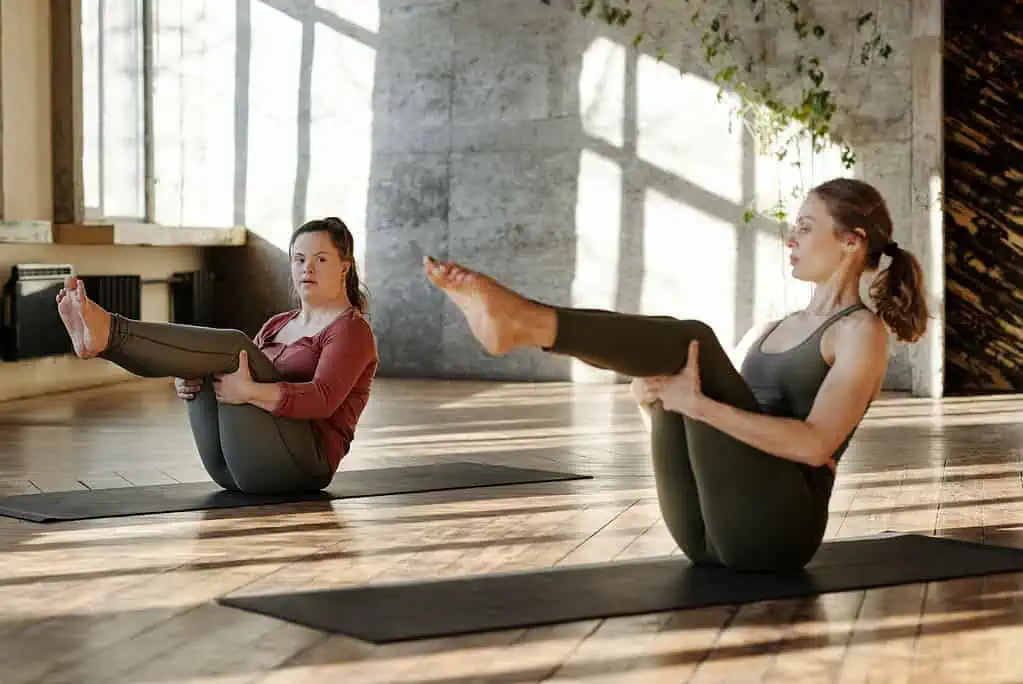
Now that you know exactly what’s happening in Navasana, it’s time to experience it for yourself! The instructions below will take you into Half Boat Pose, where you keep your knees bent. If you’re still building up your strength and working on alignment, you can stay in that position. When you’re ready, the last steps will take you into Full Boat Pose (Paripurna Navasana) with your arms and legs extended.
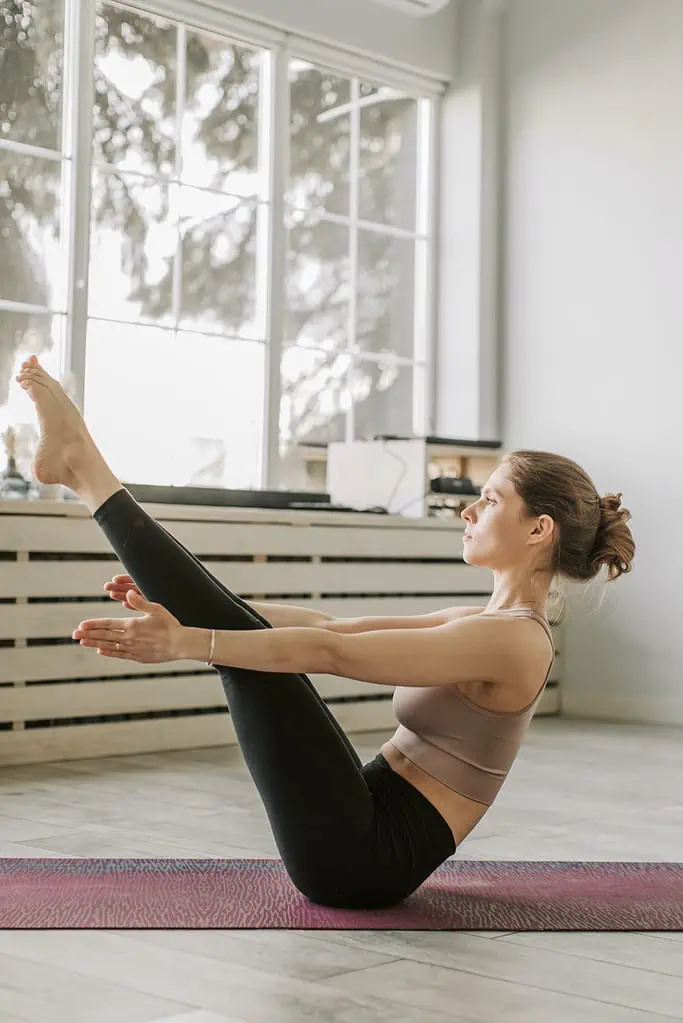
How To Do Boat Pose:
- Begin seated on your yoga mat and your legs out in front of you.
- Bend your knees and bring your feet flat on the floor.
- Bring your hands behind your thighs and sit up as tall as possible, with your spine long.
- Scoop your lower belly up, and close your rib cage to feel your core muscles activate.
- Bring your chest forward and open; think about spreading your collarbones apart while also keeping your shoulder blades wide across your upper back.
- Tilt your pelvis slightly so you rock forward onto your sit bones.
- Keep your spine straight as you float one foot off of the floor. Maintain balance as you lift the other foot, both shins parallel to the floor.
- Squeeze the inner arches of your feet together to feel your adductor muscles (inner thighs) engaged.
- Keep the shape of your upper body — chest open and spine long — as you reach your arms straight forward, palms facing each other.
- Stay in Half Boat Pose with bent knees for a few breaths then release your feet back down to the floor… Or, continue to Full Boat.
To come into the full expression of Boat Pose:
- Keep your weight forward and maintain balance on your sit bones.
- Begin to slowly straighten your legs, bringing your entire body into a V shape. Pull your kneecaps up so the muscles of your thighs are engaged.
- Lift your arms over your head, biceps by your ears, and palms facing each other. Create space between your shoulders and your ears, and keep your shoulder blades spread wide across your back.
- Hold Paripurna Navasana for a few breaths. When you are ready, bend your legs and release your feet to the floor, returning to an easy seated position.
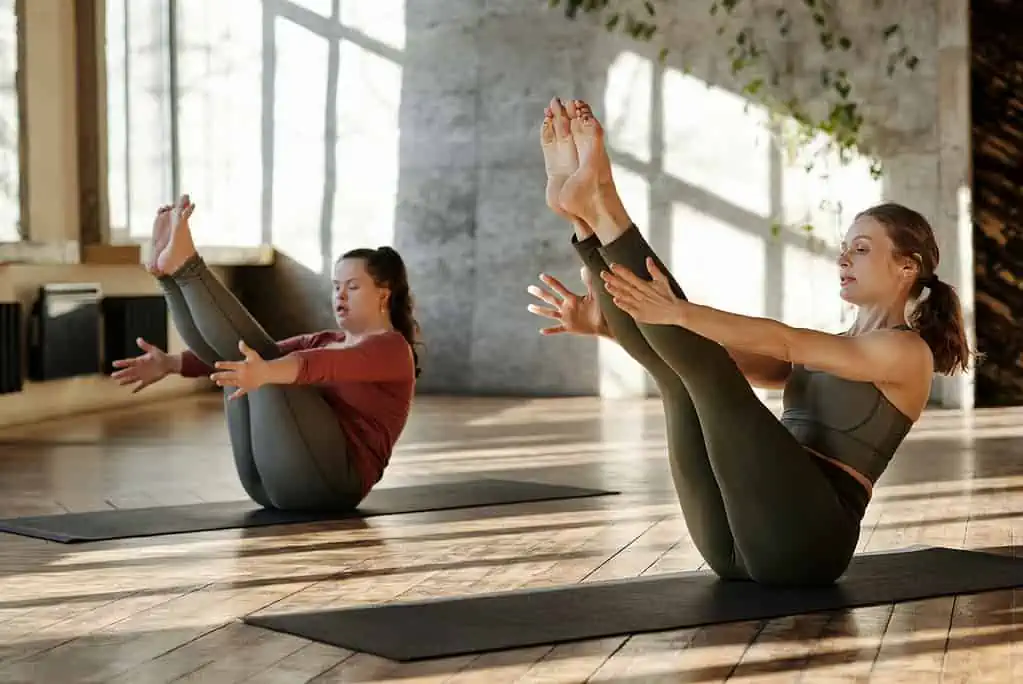
If you prefer visual cues and verbal instructions, check out this Boat Pose Tutorial:
Boat Pose Variations
When you can maintain balance and that V-shaped upper body alignment in Paripurna Navasana, it can be fun to play around with the shape of your vessel. Try these variations to mix up your Boat Pose!
One Leg Bent
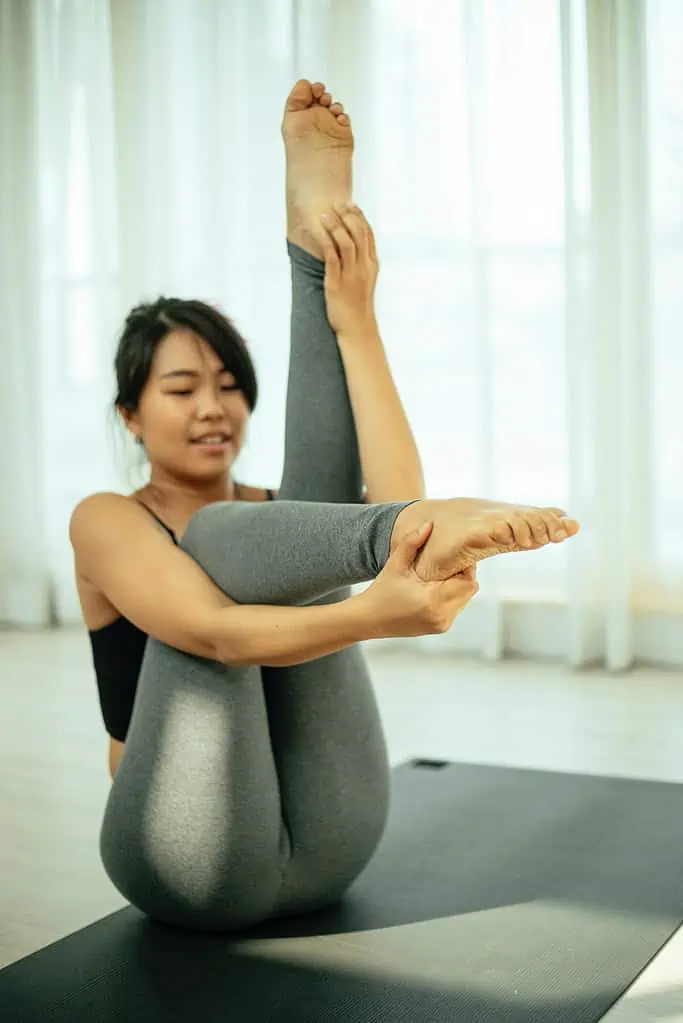
If you are working towards straightening your legs from Half to Full Boat, this is the perfect variation for you. Begin in Navasana with your knees bent and simply extend one leg. Hold for a few breaths, then return to Half Boat and try the other side.
Double Big Toe Pose (Ubhaya Padangusthasana)
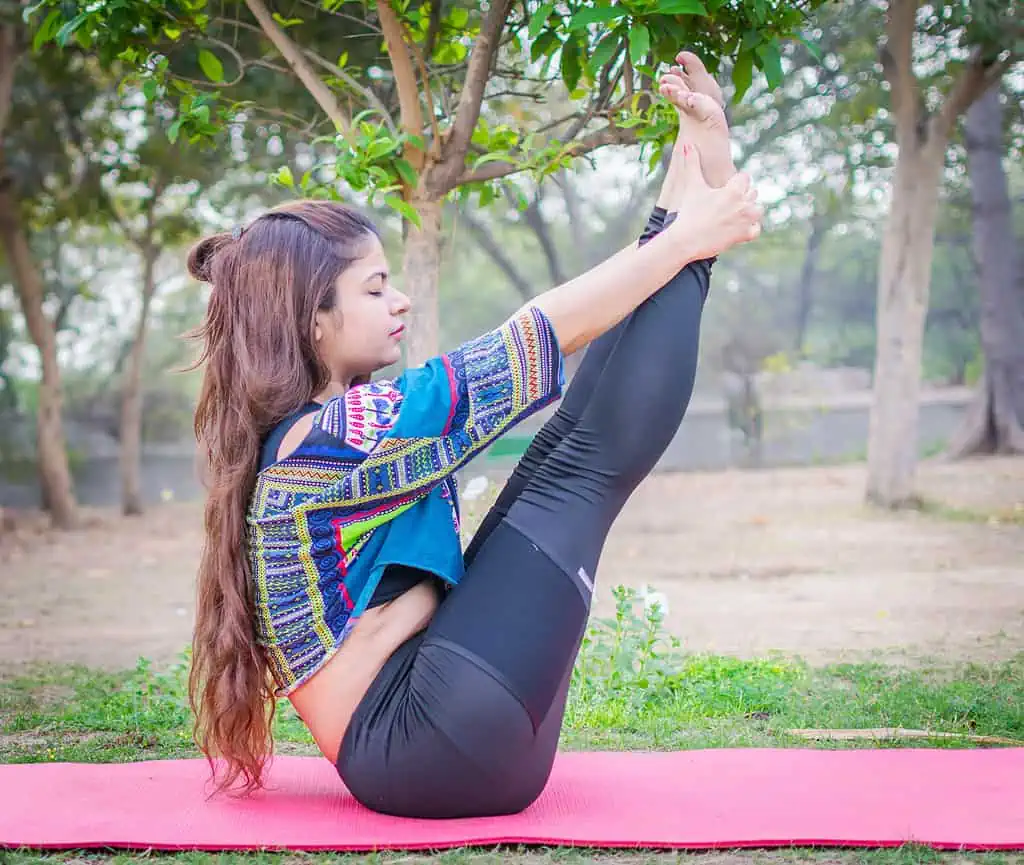
This advanced variation requires a keener sense of balance since you do not lift your arms behind you to counterbalance the weight of your legs.
From Paripurna Navasana with your legs straight, reach towards your feet and hook your first two fingers around your big toes. Keep balancing on your sit bones — try to avoid rocking back onto your tailbone.
You can choose to hold here for a few breaths, or open your legs into a straddle position and try the wide-legged version.
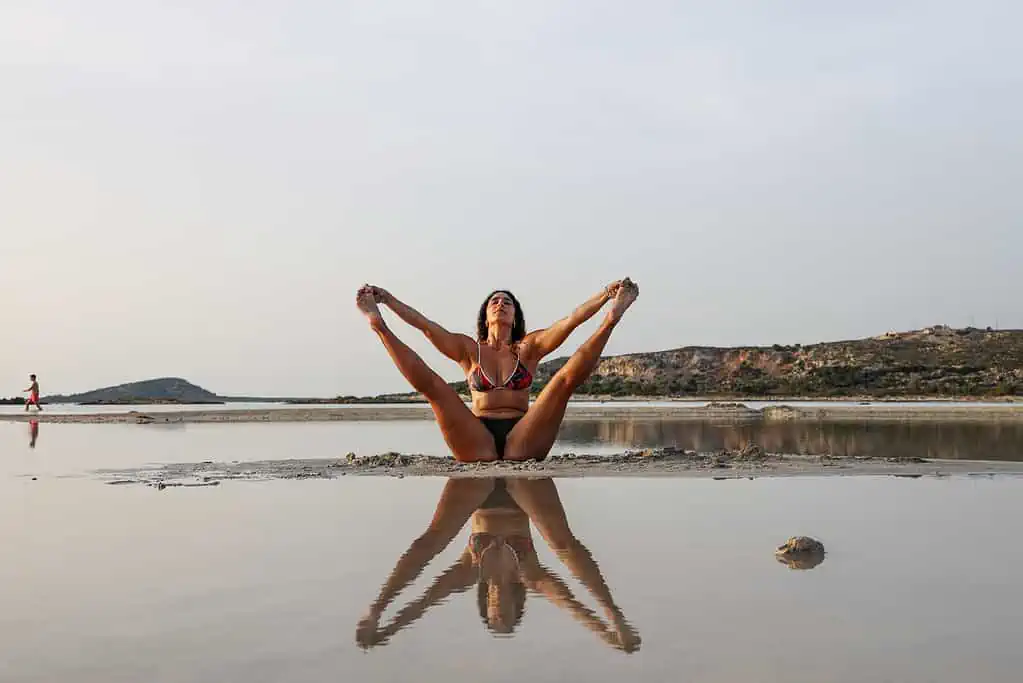
When you’re ready, bend your knees and release your feet to the floor.
Low Boat Pose

You might have heard this Navasana variation referred to as a hollow body hold. It’s deceptively challenging and great training for inversions like handstands!
From Half Boat Pose, rock back slightly onto your tailbone and extend your legs, hovering them about six inches above the floor.
Keep your arms reaching forward, palms facing up, or sweep your arms over your head to reach behind you.
To give your core muscles an extra workout, move from Low Boat to Half Boat (legs bent) and back several times as if you are doing ab crunches.
Revolved Boat Pose

Try Paripurna Navasana with a twist! From Full Boat Pose, wrap the first two fingers of your left hand around your right big toe. As you exhale, twist to your right and extend your right arm behind you.
Hold for a breath or two, then return to your center. Release your legs to the floor for a short rest, or go directly to the other side beginning in traditional Boat Pose, this time taking your left big toe in your right fingers, and opening to your left.
How To Modify Your Boat Pose
Since Paripurna Navasana is a full-body yoga posture, you might find some simple modifications helpful when just learning the pose. Try these tips if you are a beginner working on your body awareness and alignment.
- Supported boat: sit on your mat with your knees bent and your feet flat. Bring your hands to the ground next to your hips. Keep your elbows bent and palms pressing into your mat, then try to lift one or both feet into Navasana.
- Use a blanket: place a folded blanket under your sitting bones for a little cushion and an easier time balancing.
- Use a wall: if you tend to rock too far back onto your tailbone, try practicing Navasana with a wall behind you. Keep your head and spine reaching up and back. If you feel the back of your head touch the wall behind you, you’ll realize that you need to shift your weight forward to your sit bones.
Who Should Skip Boat Pose
With so many modifications making this an accessible pose, Navasana is generally safe for most yoga students. However, there are certain cases to take caution. Here’s who should skip Boat Pose:
- Students with injury or chronic pain in hips, shoulders, or lower back.
- People with neck injuries, such as Boat Pose can put a strain on the neck to keep the head held up
- Pregnant women in their 2nd or 3rd trimester, as the weight of the uterus and growing fetus puts too much pressure
- If you are experiencing diarrhea or other abdominal discomforts, since the V shape of the boat pose compresses your internal organs.
- Older yogis with osteoporosis, as the weight of the body is balanced on the sitting bones and can put strain on the hips.
Try these poses to get yourself warmed up and ready to practice Boat Pose:
Cat/Cow: warm up your spine.
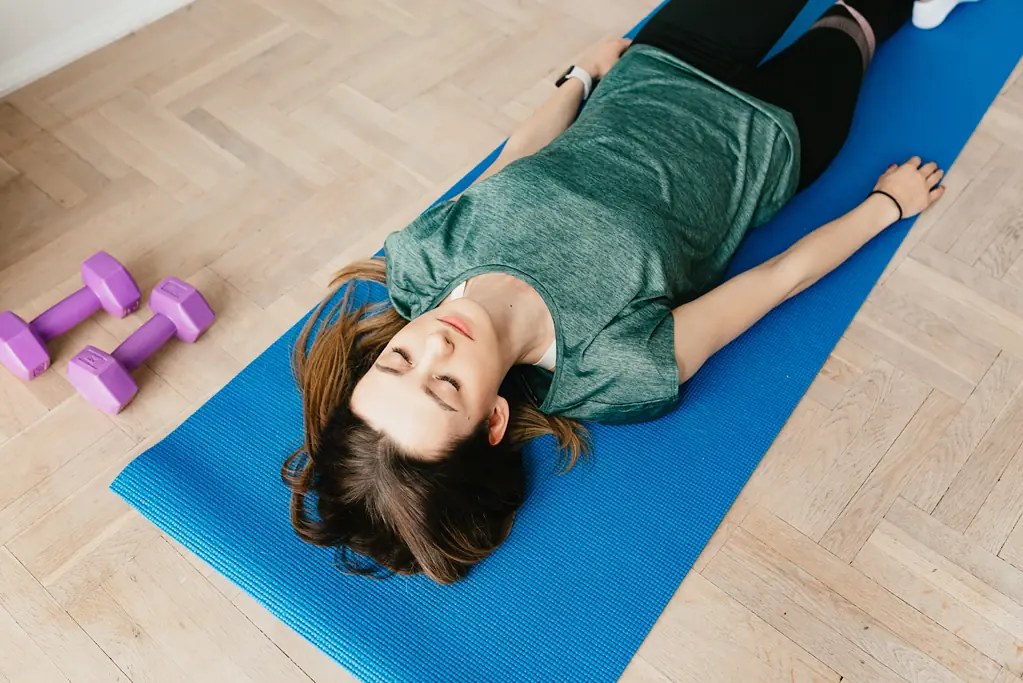
- Begin in a tabletop position, on all fours.
- As you inhale, drop your belly, and arch your back, tilting your tailbone up towards the sky. Lift your chin an inch or two.
- With your exhale, round your spine and drop your chin towards your chest. Feel your shoulder blades spread wide across your upper back.
- Move with your breath between Cat and Cow for a few rounds. Then, return to the Table Top with your spine in a neutral position.
Extended Cat/Cow: activate your core.
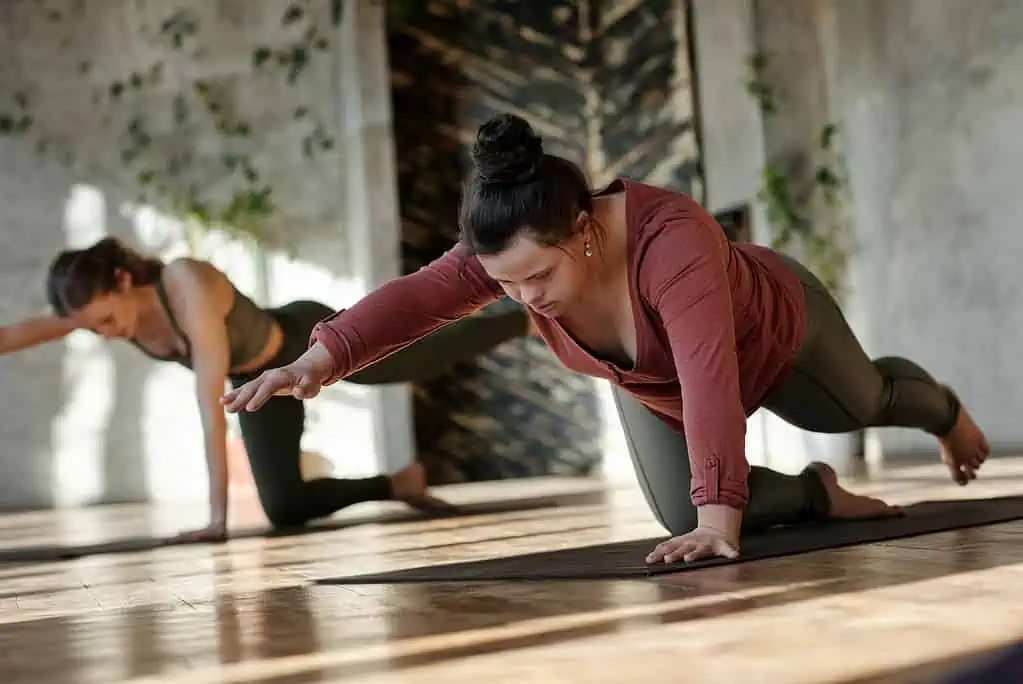
- From the Table Top, extend your right leg back and reach your left arm forward.
- Hold for 5 breaths. Then, release your arm and leg back to the floor and return to Table Top.
- Repeat on the other side, extending your left leg back and right arm forward.
Downward Facing Dog: lengthen your spine.
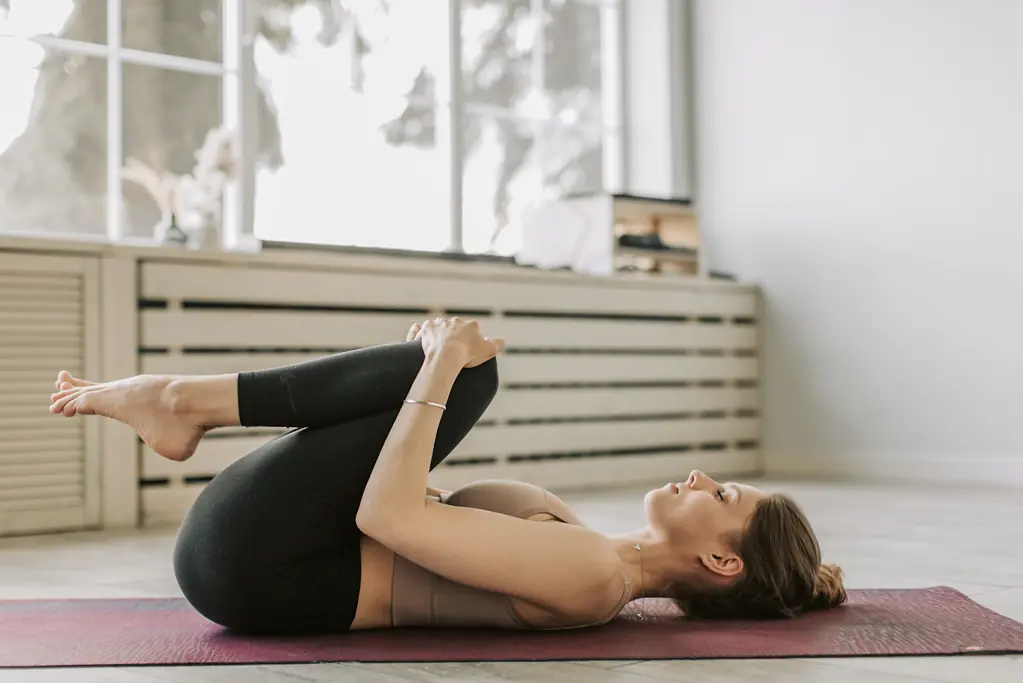
- Begin in Table Top.
- Tuck your toes and send your hips towards the sky as you straighten your legs.
- Widen your shoulder blades and press your chest toward your thighs.
- If your hamstrings are especially tight, keep a slight bend in your knees to avoid any pulling sensations in your lower back.
- Hold your Down Dog for 5-10 breaths, then gently release your knees down to your mat.
Forearm Plank: activate your core.
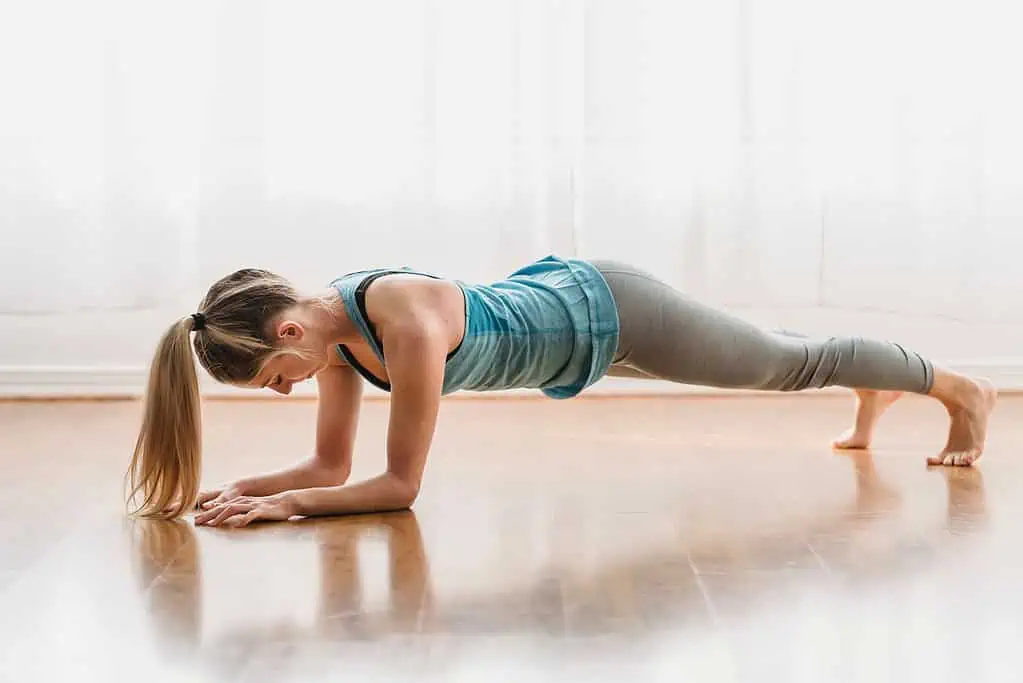
- Begin in a tabletop position. Lower yourself down to your forearms, keeping your elbows underneath your shoulders.
- Pull your low belly in and up to engage your core.
- Lift up and out of your shoulders; avoid letting your chest sink.
- Step one foot back, and then the other. Pull up on your kneecaps and press back through your heels so all the muscles of your legs are active.
- Hold your Forearm Plank for 30-60 seconds, then release your knees back down to your mat.
Cobra Pose: open your chest.
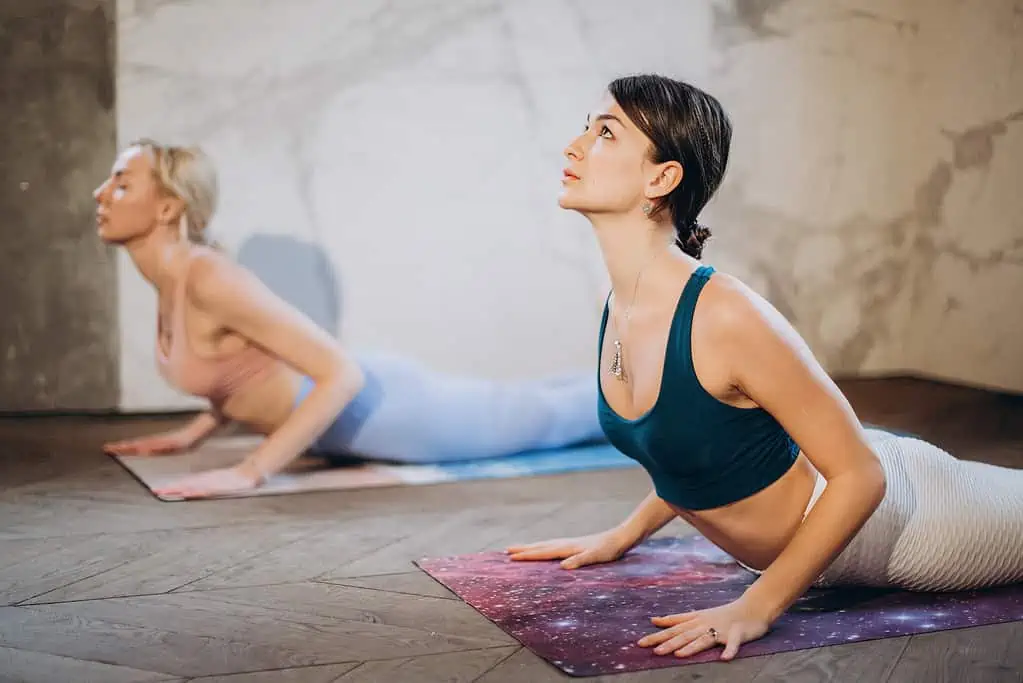
- Begin laying face down on your belly.
- Bring your fingertips underneath your shoulders.
- Press the tops of your feet into your mat, so your leg muscles and glutes are activated.
- Pull your navel in and up, towards your spine.
- With an inhale, lift your upper body. Shine your heart forward and keep space between your shoulders and ears.
- Hold your Cobra Pose for a few breaths, then as you exhale release back down to your mat.
Complementary yoga poses
After practicing Navasana, it’s a good idea to take yourself through a few poses that release the hips and open the front of the body.
Bound Angle Pose: open your hips.
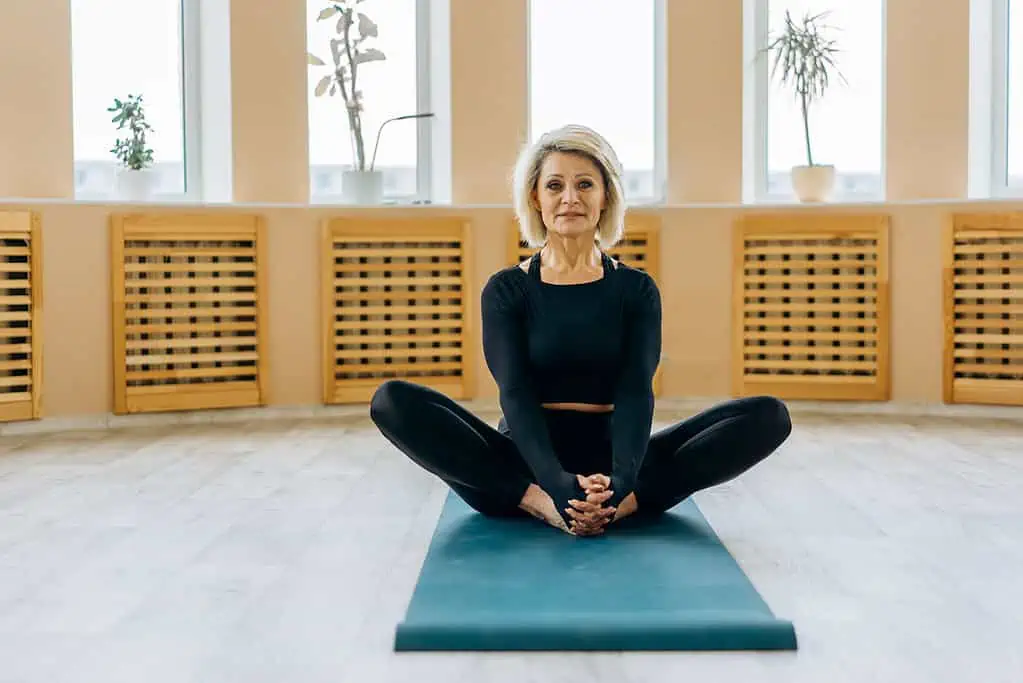
- Come to a seated position with your spine straight and tall.
- Bring the bottoms of your feet together and let your knees open to the side.
- Remain sitting tall with your hands on your ankles, or fold over your legs as you reach your arms forward.
- Hold for a minute or so, then walk your hands back in to sit up tall.
Low Lunge: stretch your hip flexors.
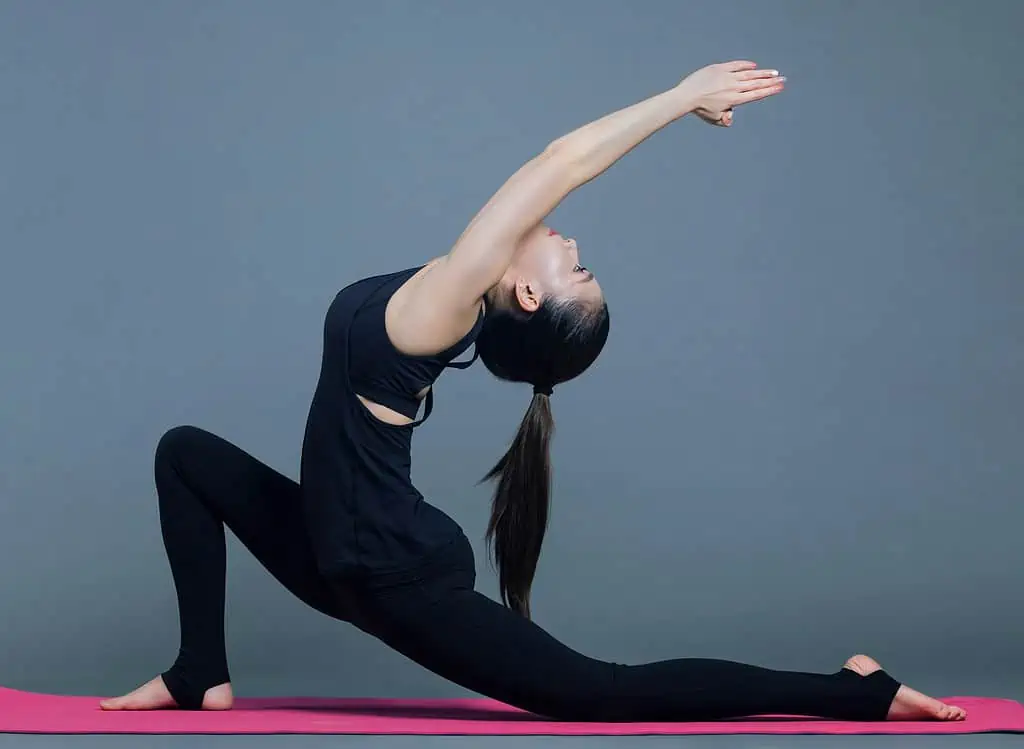
- Begin standing on your knees.
- Bring your right leg forward and plant your foot flat on the floor.
- Square off your hips and press your hips forward and down towards the floor.
- Bring your hands to your mat, framing your foot, or reach them up over your head.
- With each exhale, try to let your hips sink a little closer to the floor.
- After a few deep breaths, bring your right leg back and practice Low Lunge on your other side, stepping your left foot forward.
Sleeping Pigeon Pose: release your hips.
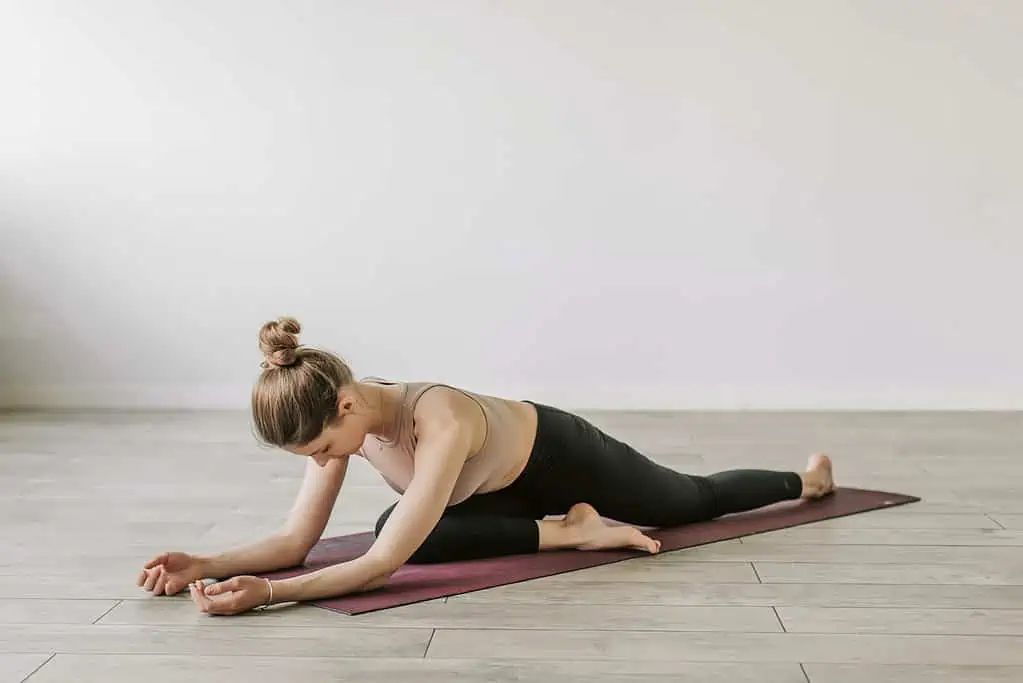
- Start in a tabletop position, on all fours.
- Bring your right leg forward: right knee to right elbow, right ankle to left wrist.
- Gently set your leg down and shift your hips forward as you extend your left leg behind you.
- Take a breath in to lengthen your spine; as you breathe out, fold over your bent front leg as you reach your arms forward and drop your head.
- Hold for a minute or so, then walk your hands back in toward your body.
- Return to the Table Top, then repeat Sleeping Pigeon Pose on your other side.
Bridge pose: open up the front side of your body.
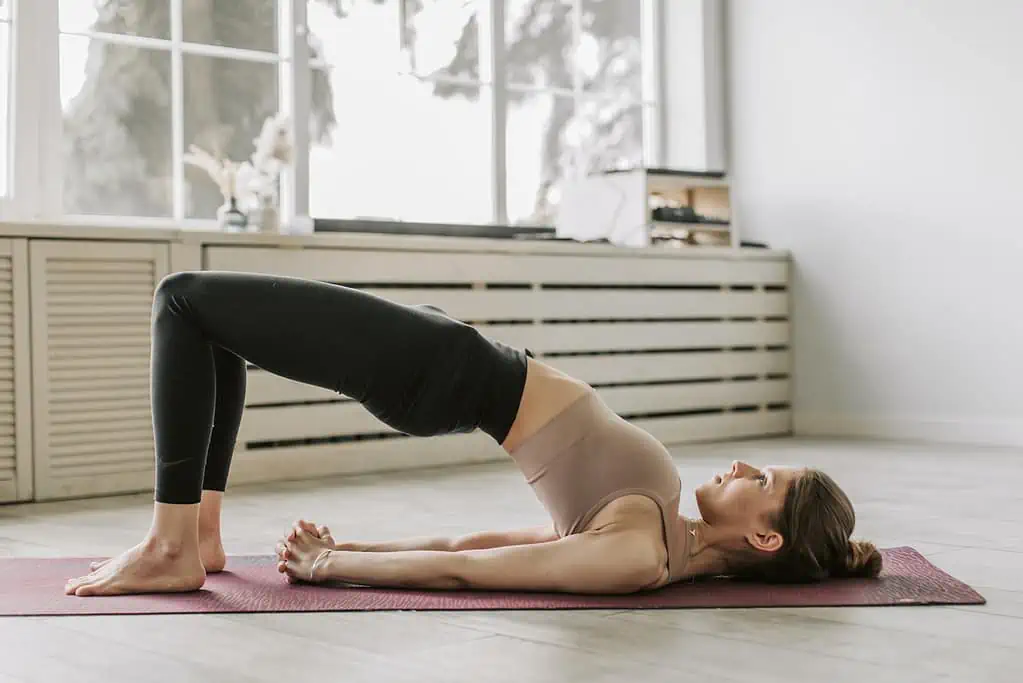
- Begin lying on your back with your knees bent and feet flat on the floor.
- Bring your arms to your sides, palms down.
- Ground down through your feet and squeeze your glutes to lift your hips into Bridge Pose.
- To open your chest and spine more, walk your shoulder blades together and bring your arms underneath you and interlace your fingers.
- Hold your Bridge Pose for 10-15 breaths, then gently release yourself back down onto your mat.
Boat Pose Common Questions
I’m having trouble balancing. What should I do?
Start practicing boat with feet on the floor until you can maintain length in the spine and find the proper placement of the sitting bones. Then, try with your feet elevated on blocks. From there, play with lifting one leg and then the other.
How long should I hold boat pose for?
In the beginning, you can set a goal for yourself to hold your Navasana for 5 or so breaths and build up from there. Try the pose a couple times, adding one breath each time you do it. Once you have adequate hip flexor strength and are able to maintain your balance, you can hold your Boat Pose until you feel your muscles begin to fatigue.
I feel pulling in my low back when I try to straighten my legs. What should I do?
Trying to straighten the legs into a V shape calls for adequate core strength as well as open hamstrings. Try doing some forward folds or other hamstring stretches and see if you feel a difference. Otherwise, you might need to simply take a step back and keep practicing half boat with your knees bent and shins parallel to the floor. Remember that yoga isn’t about the shape of the posture, but the intention. You are still strengthening your core and hip flexors even with modified versions of Boat!


